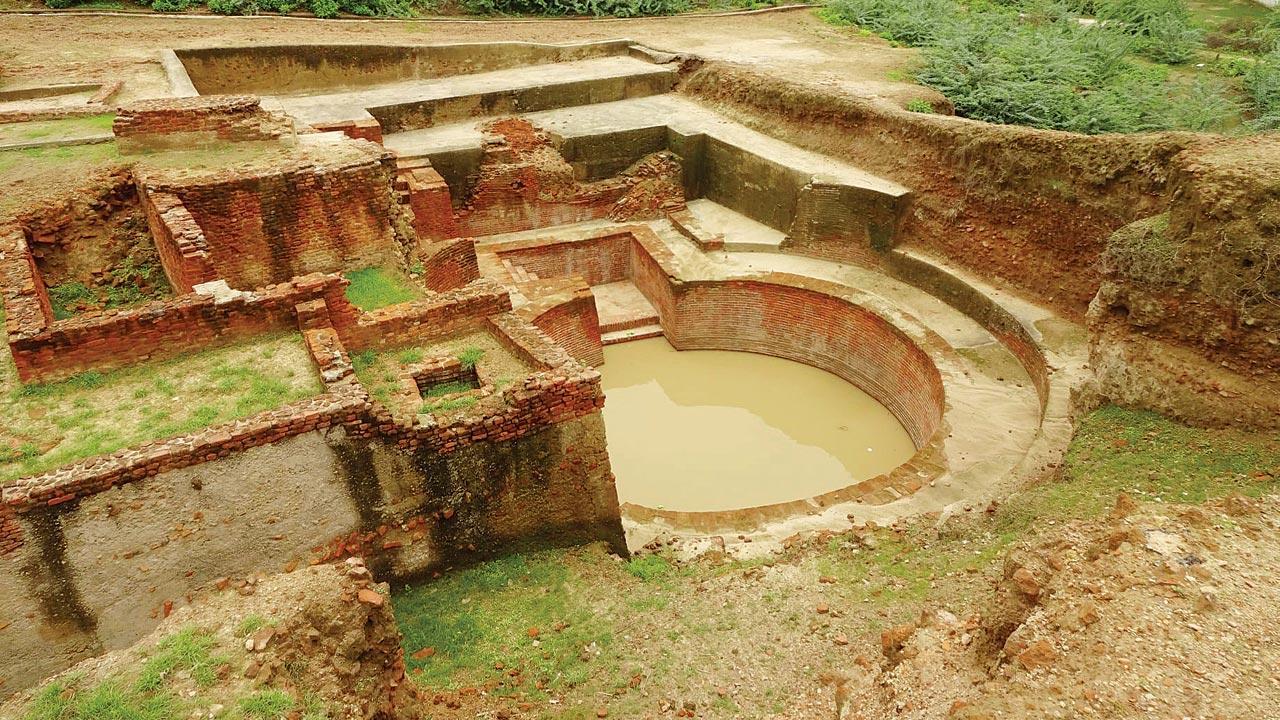Two long-time friends and travel companions charted the route Lord Rama took during exile by consulting iterations of the Ramayana. Out now is their mytho-travelogue narrating experiences of the places, people, food and stories they encountered on this epic adventure

A 2,500-year-old structure excavated by the ASI in Shringaverpur near Allahabad, close to where Rama is said to have crossed the Ganga and donned the garb of a sanyasi
Where is Chitrakoot, Kishkindhya and Panchvati?” Vikrant Pande had asked his friends two years ago, questions many didn’t have the answers to. “Most people could not point Ayodhya on the map, though it was on television every day for political reasons,” he says. It was a desire to discover locations mentioned in the mythological epic Ramayana that led Pande and Neelesh Kulkarni to follow in the trail of Rama. Chitrakoot became the first place they visited in August 2018, a trip that led to the drafting of a chapter that got their publisher to green-light the project. It now finds space in In the Footsteps of Rama: Travels with the Ramayana (HarperCollins), their new title.
ADVERTISEMENT
The Ramanathaswamy temple in Rameshwaram, Tamil Nadu, where it is believed the lingam was consecrated by Rama the day after the coronation of Vibhisan
Pande, an IIM Bangalore graduate who spent close to 25 years in corporate life, and has translated 12 Marathi classics including Shriman Yogi and Sambhaji into English is long-time friend to Kulkarni. Kulkarni is a management graduate from FMS, Delhi, who is an entrepreneur, theatre enthusiast, dubbing artist, travel blogger, public speaking coach and cricket commentator. They have travelled together extensively, but this, they say, was the first trip of its kind. Stories of a Pune doctor who had done an aerial survey of Rama’s travel route, and books like Walking with Nanak, which wove travel stories with myths, were among the inspirations that set the two on this ambitious path.
Indentations on a rock resembling a large footprint believed to be Hanuman’s when he grew in size before destroying Ashok Vatika, at the Sita Amman temple, outside Nuwara Eliya, Sri Lanka
Pande and Kulkarni wrote and travelled for over two years, while balancing their professional and personal obligations. They charted out locations although not necessarily in the same sequence as in the books, and spent at least a week in each place, making notes and reading up scriptural accounts after each trip. “Our agenda was opened-ended. We didn’t know what we would find. We wanted to go and discover, which meant we had to be flexible about our dates of return,” says Pande.
A 900-feet-high hill with 575 steps leading up to the place fabled to be Hanuman’s birthplace, 35 km from Hampi. Pics courtesy/Vikranti Pande and Neelesh Kulkarni
In the Footsteps of Rama is filled with local flavour drawn from colourful characters—drivers, priests, sadhus and tour guides—they met along the way, filling it with a sense of delight and spontaneity. “One thing I was careful about was that the travelogue should not become a travel guide,” says Pande. “We wanted to ensure that the reader sees and experiences the places through our eyes.” It was important to visit the places they were writing about to avoid generic descriptions. Kulkarni points out how this dedication heightened the book’s ‘felt’ quality and yielded its own rewards. For instance, they were surprised to find that a minor episode of Rama killing the golden deer Maricha was commemorated with as many as nine temples in the area.
Vikrant Pande and Neelesh Kulkarni
Pande cites the visit to Tulsidasa’s birthplace in Chitrakoot, a village that lies partly in Madhya Pradesh and in part in Uttar Pradesh. Here, Rama spent much of his exile years and it’s here that Bharat convinced him to return to Ayodhya, marked by the Bharat Milap Mandir. The sight of people reciting the chaupais from Ramacharitamanas day and night, Pande says, was one of the high points of their travels. There were also the scenic sights in Sri Lanka where the battle between Rama and Ravana was fought. For Kulkarni, the memory of the pursuit of an ashram in Chitrakoot where they made their way through a jungle inhabited by wild animals to meet a lone priest unshaken in these surroundings by his faith in god, has stayed on. “This has been a recurring theme through the journey. We met a host of interesting people who had given up corporate careers and regular lives to dedicate themselves to the care of a particular temple, deity or cause and when asked, they all had the same answer—that they have been sent here to perform a duty and the one who has sent them will also look after them.”
Map/Uday Mohite
 Subscribe today by clicking the link and stay updated with the latest news!" Click here!
Subscribe today by clicking the link and stay updated with the latest news!" Click here!






